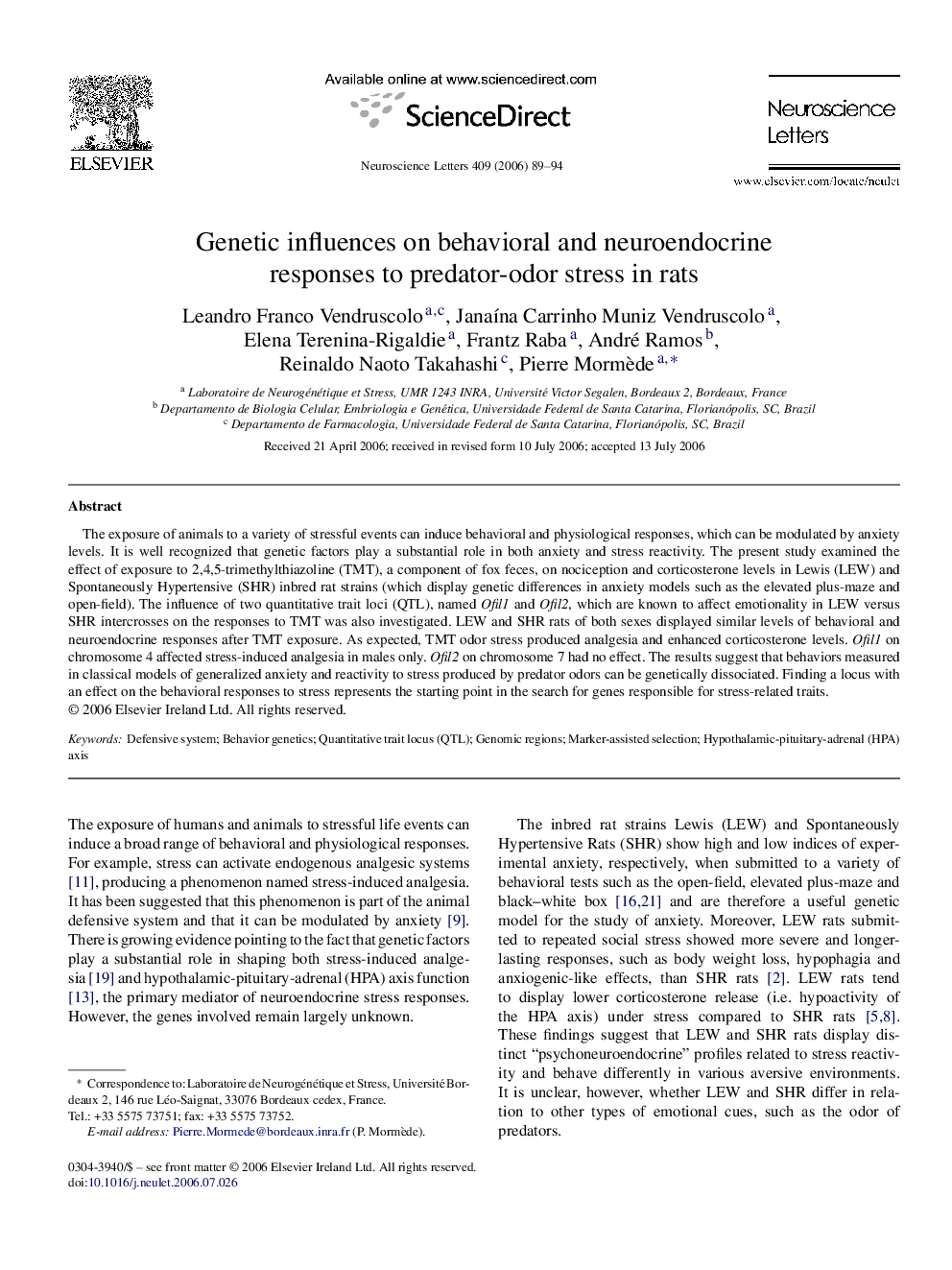| کد مقاله | کد نشریه | سال انتشار | مقاله انگلیسی | نسخه تمام متن |
|---|---|---|---|---|
| 4350029 | 1296969 | 2006 | 6 صفحه PDF | دانلود رایگان |

The exposure of animals to a variety of stressful events can induce behavioral and physiological responses, which can be modulated by anxiety levels. It is well recognized that genetic factors play a substantial role in both anxiety and stress reactivity. The present study examined the effect of exposure to 2,4,5-trimethylthiazoline (TMT), a component of fox feces, on nociception and corticosterone levels in Lewis (LEW) and Spontaneously Hypertensive (SHR) inbred rat strains (which display genetic differences in anxiety models such as the elevated plus-maze and open-field). The influence of two quantitative trait loci (QTL), named Ofil1 and Ofil2, which are known to affect emotionality in LEW versus SHR intercrosses on the responses to TMT was also investigated. LEW and SHR rats of both sexes displayed similar levels of behavioral and neuroendocrine responses after TMT exposure. As expected, TMT odor stress produced analgesia and enhanced corticosterone levels. Ofil1 on chromosome 4 affected stress-induced analgesia in males only. Ofil2 on chromosome 7 had no effect. The results suggest that behaviors measured in classical models of generalized anxiety and reactivity to stress produced by predator odors can be genetically dissociated. Finding a locus with an effect on the behavioral responses to stress represents the starting point in the search for genes responsible for stress-related traits.
Journal: Neuroscience Letters - Volume 409, Issue 2, 1 December 2006, Pages 89–94